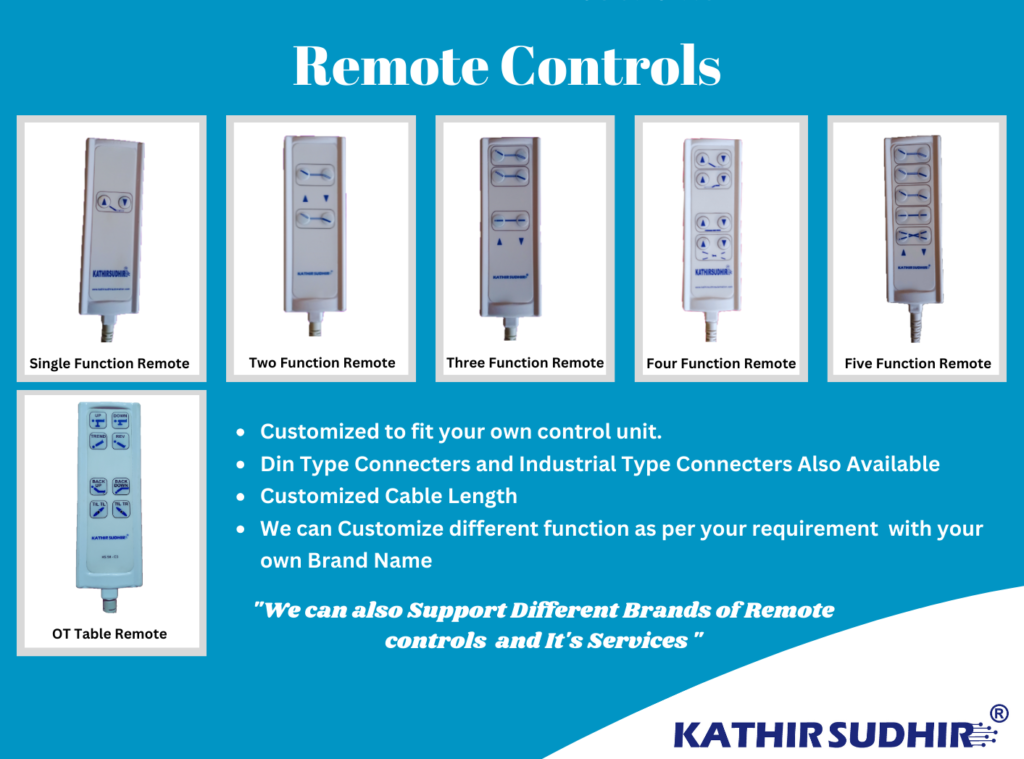Introduction: In today’s fast-paced world, technology is transforming every aspect of our lives, including the healthcare industry. One remarkable advancement is the integration of remote controls for hospital beds. These remote controls are changing the way patients experience care in healthcare facilities and hospitals. In this blog, we will explore the numerous benefits and functionalities of remote controls for healthcare or hospital beds.

- Enhanced Comfort and Independence
One of the most significant advantages of remote controls for hospital beds is the improved comfort and independence they offer to patients. Traditionally, patients had to rely on healthcare professionals to adjust their bed’s position. With remote controls, patients can now independently adjust the bed’s height, head, and foot positions to find the most comfortable and therapeutic arrangement. This newfound autonomy can greatly boost a patient’s morale and contribute to a more positive healthcare experience.
- Pressure Ulcer Prevention
Maintaining proper body positioning is essential for preventing pressure ulcers, which are a significant concern in healthcare settings. Remote controls allow caregivers to make regular adjustments to the bed’s position, ensuring that patients are not putting excessive pressure on any one area of their body for an extended period. This proactive approach to pressure ulcer prevention can significantly reduce the risk of complications and discomfort for patients.
- Easier Mobility Assistance
Patients with limited mobility often require assistance when getting in and out of bed. Remote controls equipped with bed exit alarms and bed exit notifications can alert healthcare professionals when a patient attempts to leave their bed independently. This functionality provides an extra layer of safety and helps prevent falls or injuries.
- Personalized Patient Care
Remote controls for hospital beds can be customized to meet the specific needs of each patient. Healthcare providers can program the bed’s settings based on an individual’s medical condition and preferences. This personalization ensures that patients receive the most comfortable and effective care possible, which can lead to faster recovery times and improved overall health outcomes.
- Reduced Caregiver Strain
Caregivers and healthcare professionals also benefit from remote control technology. Instead of manually adjusting bed positions, they can use remote controls to make precise changes quickly. This reduces physical strain on caregivers, allowing them to focus more on providing direct patient care and support.
- Enhanced Infection Control
Many modern remote controls for hospital beds are designed with infection control in mind. They feature antimicrobial materials and easy-to-clean surfaces, reducing the risk of transmitting infections between patients.
- Integration with Healthcare Systems
Remote control technology is increasingly being integrated with electronic health record (EHR) systems, allowing healthcare providers to monitor and track patient data in real time. This integration enhances communication between healthcare teams, streamlines data management, and supports better decision-making in patient care.
Conclusion
Remote controls for hospital beds have revolutionized the healthcare industry by providing patients with greater comfort, independence, and safety while reducing caregiver strain. These advanced devices are not just about convenience; they play a crucial role in improving patient outcomes and the overall quality of care in hospitals and healthcare facilities. As technology continues to advance, we can expect even more innovative solutions to enhance the patient experience and the efficiency of healthcare delivery in the future.
